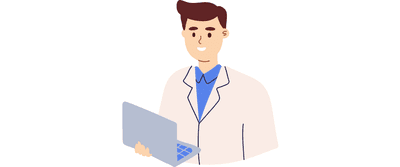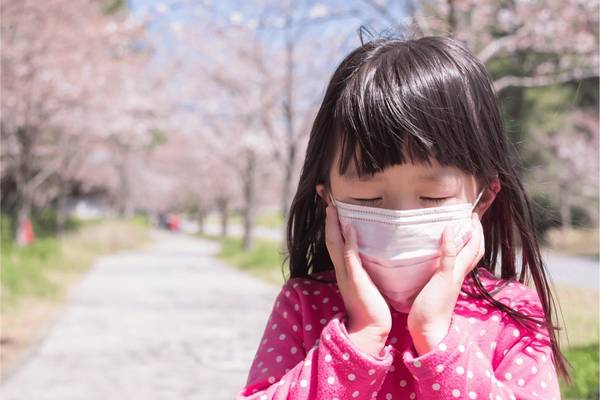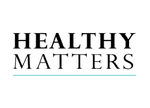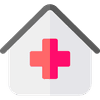![Healthy Matters]() Pharmacist Tips | Dosages | Side effects
Pharmacist Tips | Dosages | Side effects![Healthy Matters]() Nutritionist Tips | Facts | Precautions
Nutritionist Tips | Facts | Precautions![Healthy Matters]() Practitioner Tips | Dosages | Side effects
Practitioner Tips | Dosages | Side effects![Healthy Matters]()
![Healthy Matters]()

Hay Fever (Allergic Rhinitis): An Allergic Response to Airborne Particles
9 min read

In Hong Kong, 1 out of every 4 people suffers from hay fever (allergic rhinitis). It is an allergy to pollen, dust mite, mold, animal hair, etc. Hay fever is frequently confused with the common cold because they have similar signs and symptoms, like runny nose, itchy eyes/throat, sneezing, and eye pain. Although hay fever is not curable, there are things you can do to prevent episodes of hay fever. Here is your ultimate guide to avoiding hay fever.
What is hay fever?
Hay fever, also known as allergic rhinitis, is a very common type of allergic reaction with symptoms similar to the common cold. There may be sneezing, nasal congestion, runny nose, itchy eyes, itchy throat, eye pain, and sinus pressure. Unlike a cold, which is caused by a virus, hay fever is an allergic response to airborne particles in the environment such as pollen, dust mites, mold, and animal hair, usually when these allergens contact the mouth, nose, eyes and throat.
The common name ‘hay fever’ comes from the fact that allergic rhinitis has flu-like symptoms, and its association with hay arose from an early but incorrect theory that the symptoms were brought out by the smell of freshly cut hay. It wasn’t until 1859 that the scientist Charles Blackley discovered pollen as the cause of these flu-like allergic reactions.
Allergy rhinitis affects both adults and children. In fact, there are two types of allergic rhinitis:
- Seasonal allergic rhinitis is commonly known as hay fever. It is most frequent in spring, summer, and early fall when the weather is warm and humid. Pollen and spores in the air during these seasons trigger hay fever. Treatment options include avoiding, eliminating, or reducing exposure to allergens, medication, and allergen immunotherapy.
- Perennial allergic rhinitis may occur at any time of year and is usually caused by allergens such as dust mites, animal hair, and medications. The symptoms of perennial allergic rhinitis may last all year and are usually caused by indoor allergens, such as house dust mites, pets (including birds), or mold.
Causes of hay fever
An allergy happens when the immune system misidentifies a harmless substance (an allergen) as a harmful one and releases chemicals to attack it. When you are first exposed to an allergen, your body produces an antibody called immunoglobulin E (IgE) in your blood, which detects the same allergen if you come into contact with it again. The IgE antibody activates mast cells to release the chemical histamine. Histamine causes inflammation and allergy symptoms such as itching, sneezing, rash, and fluid secretion in the eyes and nose.
At first, allergic reactions may only occur when a person is exposed to a large amount of an allergen. As the disease progresses, even a small amount of the allergen will cause reactions.
Examples of hay fever triggers include:
- Flowers, trees or grass pollens
- Fungi and mold spores
- Pet hair
- Dust mites, molds, and cockroach dust
- Irritants like cigarette smoke, perfumes, and car exhaust fumes
Hay fever is typically worse from April through August, especially when the weather is warm, humid, and windy. These are the times of the year when the pollen count is at its peak.
Risk factors of hay fever
Some people may have a higher risk of developing allergic rhinitis. These factors make a person develop allergic rhinitis more easily:
- Family history: If a close family member has hay fever or another allergy, the risk is higher.
- Gender and age: Hay fever is more common in boys before adolescence, but females are more affected after adolescence.
- Birth date: People born during the high pollen season are at a slightly increased risk of developing hay fever.
- Few childhood infections: A child who had fewer childhood infections may have a higher risk of developing autoimmune problems later in life.
- Other allergies or asthma: People with other allergies or asthma, bacterial and fungal infections, are more likely to develop hay fever.
- Medicine containing Aspirin or salicylates: These medicines can increase histamine release, thereby worsening allergic reactions.
- Environmental factors: Allergies can develop more easily in an allergen-filled workplace or household environment. Exposure to cigarette smoke also increases the risk of hay fever. If you or your family member smokes, let them quit smoking!
- Puberty, pregnancy, menstruation, or hormonal imbalance
Signs and symptoms of hay fever
Common hay fever signs and symptoms include:
- Sneezing
- Itchy throat, mouth, nose and ears
- Congested, itchy, or runny nose
- Itchy, red or watery eyes (allergic conjunctivitis)
- Feeling tired, fatigue, irritability, headaches
- Post-nasal drip: The sensation of mucus running down the back of the throat.
When the pollen count is high, these symptoms may become more severe.
Severe symptoms of hay fever may include:
- Sweats
- Headaches
- Loss of smell and taste
- Facial pain caused by blocked sinuses
- Itching or pain in the throat that spreads to the nose and ears
- Insomnia
If you have asthma, you might also experience the following symptoms of hay fever:
- Have a tight feeling in your chest
- Shortness of breath
- Wheezing and cough
Symptoms can appear at any time of year, depending on the substance to which the patient is allergic.
Complications of hay fever
If left untreated, nasal allergy can exacerbate the symptoms of other diseases or complications, such as:
- Sleep apnea: During sleep, you may have difficulty breathing or stop breathing. This may result in suffocation. Poor sleep can also lead to daytime fatigue, learning impairment, decreased productivity and quality of life.
- Asthma: If allergens move into the lungs, allergic asthma can develop.
- Other allergies: The immune system can become overly sensitive, leading to other allergies like food intolerance.
- Sinusitis: Inflammation or infection of sinuses occur more easily as severe hay fever can make the mucous membranes of the nose more sensitive to other irritants, such as cigarette smoke or dry air.
- Nasal polyps: Fleshy swellings that grow in the lining inside the nose or sinuses (small cavities within the nose) caused by inflammation of the membranes of the nose.
Diagnosis of hay fever
A doctor will ask about your symptoms, if you’ve noticed any triggers that seem to cause the allergic reaction, and whether it occurs at a particular place or time. They may ask if you recently changed your workplace or home environment, new decorations or furniture, or added a new pet. These questions help you and your doctor identify your allergen.
If the allergen cannot be identified, your doctor may refer you to an allergy specialist to perform allergy tests to identify the exact allergy. The 2 main allergy tests are:
- Skin prick test: A small amount of allergen is pricked into the skin of your arms or back. A small itchy spot (welt) will appear if you are allergic to the substance. It takes about 20 minutes to complete the test.
- Blood test: Your blood will be drawn to check for the level of immunoglobulin E (IgE) antibody in your system. This antibody is produced by your immune system in response to a suspected allergen. If you have an allergy, your IgE level will be very high.
Commercial allergy testing kits are not recommended because they are less reliable. It's also crucial that the test results are interpreted by a trained medical professional who is familiar with your symptoms and medical history.
Treatments for hay fever
Hay fever symptoms are usually short-lived and go away on their own without any special treatment. Hay fever resolves more quickly when the allergen is removed. However, some people may experience severe symptoms that make daily tasks difficult and will require treatment to lessen their severity.
If you start to have hay fever symptoms, remove yourself from the allergen (e.g. flowers) or leave the place full of the allergen (e.g. parks or dusty rooms) immediately. You may also wash your face or irrigate your nasal passages with a saltwater solution to remove allergens from your eyes and nose.
If your symptoms do not go away or become very severe, consult your doctor or pharmacist. They may recommend the following medications to help relieve your symptoms.
- Antihistamine sprays or tablets: These are available from a pharmacy without a prescription. They stop the effect of histamine and relieve runny nose, itching and sneezing. First-generation antihistamines are sedating, while newer generations are non-sedating. Examples of oral antihistamines include Chlorphenamine, Cetirizine and Loratadine. Examples of antihistamine sprays include Azelastine and Olopatadine.
- Decongestant nasal sprays: These are useful for quick relief, but should only be used for a few days at a time because long-term use can damage the nose lining. Decongestants should not be used on certain people (such as those who are pregnant or have high blood pressure). Xylometazoline is commonly used.
- Intranasal corticosteroid sprays: These are for moderate to severe symptoms (including inflammation) and are one of the most effective treatments for hay fever. It could take up to a week for the benefits to show. When used as directed, they offer a safe and effective long-term treatment. Examples include Fluticasone, Beclomethasone, Budesonide, and Mometasone
- Eye drops: If you have itchy, swollen, or runny eyes, you can use eye drops to relieve them. They are usually used alongside other medications. Eye drops often contain Sodium Cromoglicate or antihistamines.
- Oral corticosteroids: Oral corticosteroids are more effective than intranasal corticosteroids but may cause more systemic side effects. A doctor may prescribe Prednisolone for severe cases of hay fever.
- Oral montelukast: This medication relieves shortness of breath by reducing swelling and narrowing of the airways. It is also used in asthma patients.
Some people may benefit from allergen immunotherapy. Long-term immunotherapy desensitizes the immune system and increases tolerance towards allergens that trigger hay fever. In this therapy, small amounts of allergen injections or sublingual drops are given regularly for weeks or months to expose the immune system to the allergen. Immunotherapy usually lasts 3-5 years and can lead to lasting remission of allergy symptoms. It may also help to prevent asthma and new allergies.
Alternatively, acupuncture is also effective and safe for hay fever. If you are pregnant or breastfeeding, it is important to speak to your doctor or pharmacist before taking any medication to avoid potentially harmful effects on the fetus or baby.
Prevention of hay fever
Prevention is better than cure. The best way to prevent hay fever is to avoid contact with allergens. If you don't know what you are allergic to, your doctor may advise an allergy test (skin prick test). After you've identified your allergens, try to avoid contact with them as much as possible. If you know you are going to be exposed to an allergen, take appropriate treatments before the exposure to minimize the symptoms.
To prevent your hay fever symptoms, try the following:
- Apply Vaseline to your nostrils to trap pollens. Smear Vaseline around the inside edges of your nostrils to trap or block pollens and other allergens.
- Wear sunglasses or a hat to protect your eyes from pollens.
- After being outside, shower and change your clothes.
- Avoid going outside on humid and windy non-rainy days, as well as in the early evening, especially during pollen seasons. Pollen counts are high at these times. Avoid allergen triggers outside, such as those near parks or roads. It is best to stay indoors if possible.
- Use recirculated air in the car especially when pollen levels are high.
- Keep windows and doors shut as much as possible.
- Vacuum often. Using a HEPA-filtered vacuum cleaner can effectively trap pollutants. Keep all surfaces, floors, and carpets as dust-free as possible.
- Dust with a damp cloth. Dusting with a dry cloth may introduce pollutants into the air, causing discomfort.
- Avoid keeping fresh flowers inside your home.
- Reduce your exposure to dust and dust mites. Use mite-proof bedding, clean bed sheets often and dry bedding and clothing in a tumble dryer.
- As well as to animals and animal hair or fur (dander). Pets can bring pollen into your home. Groom them frequently to remove pollen and excess hair. If at all possible, avoid bringing pets into the house. If you are allergic to pet hair, you may need to make arrangements to limit your contact with the pet, such as having a family member or friend care for your pet.
- Use a dehumidifier to prevent mold, especially on humid days like spring.
- Avoid kitchen smoke. Use a ventilator in the kitchen or avoid cooking that generates smoke.
- Keep away from cigarette smoke. Quit smoking or let your close ones quit smoking.
FAQs
Hay fever (allergic rhinitis) is caused by an allergy to airborne particles such as pollen or dust, whereas the common cold is caused by virus infection. Hay fever is non-contagious, whereas the common cold virus can spread to other people. Hay fever may last for weeks or months, unlike a cold, which usually goes away after 1 to 2 weeks. If you have itchy or watery eyes, or if your symptoms worsen or disappear when you change your environment, it is more likely that you have an allergy.
Hay fever can occur at any time of day; however, symptoms may appear to be worse at night if it is primarily caused by dust mites and mold spores in indoor environments such as your bedroom, where these allergens are contained within curtains, carpets, bedding, and mattresses.
When you have an exacerbation of hay fever, remove yourself from the allergen (e.g. flowers) or leave the place of the allergen (e.g. parks or dusty rooms) immediately. To wash off allergens from your nose, you may irrigate your nasal passages with a saltwater solution. Prevent hay fever by keeping your environment dust-free and well-ventilated. Clean your clothes and furniture often.
Dust mites can cause allergic symptoms.They like to live in warm indoor environments like your bedroom. They usually stay in cloth material like curtains, carpets, stuffed toys, bedding, and mattresses. Get rid of dust mites by washing all beddings in hot water that is at least 54.4°C (130F) to kill dust mites, or in a dryer for at least 15 minutes at a temperature above 54.4°C (130F).
This article was independently written by Healthy Matters and is not sponsored. It is informative only and not intended to be a substitute for professional medical advice, diagnosis or treatment. It should not be relied upon for specific medical advice.

Your health resource, made in Hong Kong
Healthy Matters is Hong Kong’s leading health resource. Our mission is to help you make better health decisions and take control of your health.
Our team of experts is committed to producing reliable health content that is accurate, engaging and relevant, to cover your health & wellness journey from prevention to treatment.
Whether you are looking for trusted information on health conditions, wellbeing or looking for the right doctor or service in Hong Kong, we’re here to help!
Your health matters. Begin your health journey with Healthy Matters today!
































